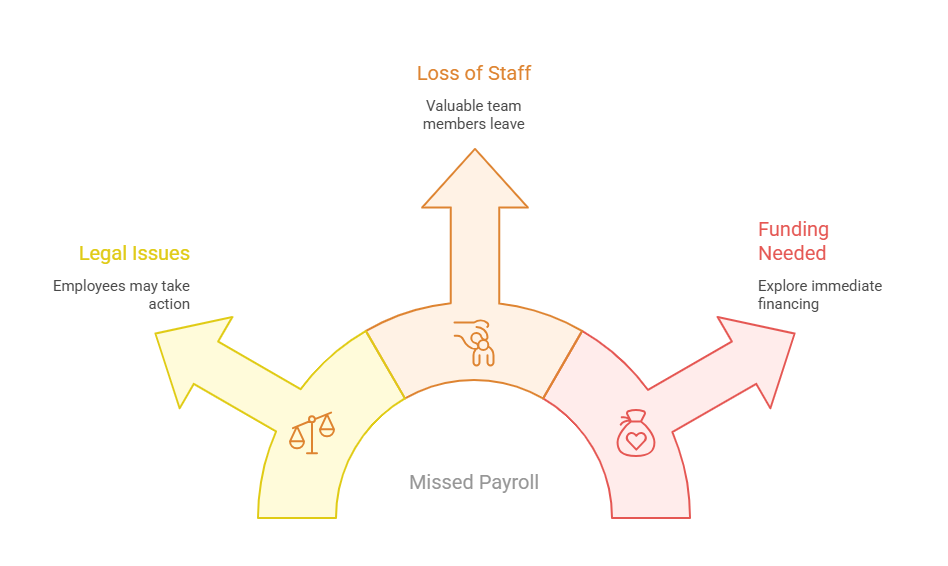5 Warning Signs Your Cash Flow Is In Trouble
Cash flow problems don't happen overnight. They typically build up gradually, sending warning signals along the way that many business owners might overlook or dismiss. Recognizing these early indicators could mean the difference between a minor financial adjustment and a major business crisis. When you understand what to watch for, you can take proactive steps to protect your company's financial health and maintain smooth operations.
Every business owner should know how to spot the telltale signs that cash flow troubles are brewing. These warning signals often appear in predictable patterns, giving you valuable time to implement solutions before the situation becomes critical.
Delayed Invoice Collections Signal Problems
When delayed invoices become a regular occurrence, it's often one of the first indicators that your cash flow may be heading toward trouble. This pattern can develop gradually, making it easy to overlook until it becomes a significant issue.
- Monitor payment terms closely: Track when invoices are sent and when payments are typically received. If you notice customers consistently taking longer to pay than your agreed terms, this trend may signal broader cash flow challenges ahead.
- Identify repeat late payers: Some clients might consistently pay beyond your standard payment window. While occasional delays happen, regular late payments from multiple customers can create a cascading effect on your available funds.
- Review aging reports regularly: Outstanding receivables that continue to grow older indicate collection issues that could impact your ability to meet immediate financial obligations. This situation often requires immediate attention to prevent further complications.
Bank Account Overdrafts Become Frequent
Frequent bank account overdrafts represent another clear warning sign that your cash flow is experiencing stress. When overdrafts shift from rare occurrences to regular events, it typically indicates that your incoming funds aren't keeping pace with your outgoing expenses.
- Track overdraft frequency: Notice if you're experiencing overdrafts more than once every few months. Regular overdrafts often signal that your cash flow timing is misaligned with your payment obligations.
- Calculate overdraft costs: These fees can quickly add up and further strain your financial resources. Each overdraft typically costs your business additional money that could be used for operations or growth.
- Examine timing patterns: If overdrafts happen around the same time each month, you might have predictable cash flow gaps that need addressing through better financial planning or alternative funding solutions.
Missed Payroll Creates Immediate Concerns

When missed payroll becomes a possibility or reality, it represents one of the most serious warning signs that your cash flow is in significant trouble. This situation demands immediate attention and action.
- Address payroll shortfalls immediately: Even considering delaying payroll indicates severe cash flow problems. Employees depend on regular paychecks, and missing payroll can lead to legal issues and loss of valuable team members.
- Communicate transparently with staff: If payroll challenges arise, honest communication with your team becomes essential. Many employees may be willing to work with you temporarily if they understand the situation and see a clear recovery plan.
- Seek emergency funding solutions: When payroll is at risk, exploring immediate financing options becomes critical. Various funding sources might help bridge the gap while you work on longer-term cash flow improvements.
Supplier Relationships Show Growing Tension
Growing supplier tension often indicates that your cash flow challenges are becoming visible to your business partners. When suppliers start expressing concerns or changing their terms, it's typically because they've noticed changes in your payment patterns.
- Payment term modifications: Suppliers might request cash on delivery instead of extending credit, or they may shorten your payment windows. These changes often reflect their concerns about your ability to pay on schedule.
- Increased communication frequency: When suppliers start calling more often about outstanding invoices or payment status, it usually means they're monitoring your account more closely due to perceived risk.
- Credit limit reductions: Some suppliers may lower your credit limits or require deposits before fulfilling orders. These actions typically indicate they're trying to limit their exposure to potential payment delays.
Operating Expenses Consistently Exceed Revenue
When operating expenses regularly exceed your incoming revenue, it creates an unsustainable pattern that can quickly deplete your cash reserves. This imbalance represents a fundamental cash flow warning sign that requires immediate attention.
- Monthly expense tracking: Regular monitoring of your expense-to-revenue ratio helps identify when costs are growing faster than income. This trend can develop gradually, making consistent tracking essential for early detection.
- Fixed cost evaluation: High fixed costs relative to variable income can create cash flow vulnerabilities, especially during slower business periods. Understanding this relationship helps in planning and risk management.
- Seasonal impact assessment: Some businesses experience predictable seasonal fluctuations that might temporarily create expense-revenue imbalances. Distinguishing between seasonal patterns and ongoing problems is crucial for appropriate response.
Recognizing these 5 warning signs your cash flow is in trouble gives you the power to take action before minor issues become major crises. From delayed invoices and frequent overdrafts to missed payroll and supplier tension, these indicators typically appear with enough advance notice to implement effective solutions.
The key lies in monitoring these warning signs consistently and responding quickly when they appear. Whether through improved collection processes, better expense management, or alternative financing options, addressing cash flow challenges early often leads to more manageable solutions and better outcomes for your business.

.png)






